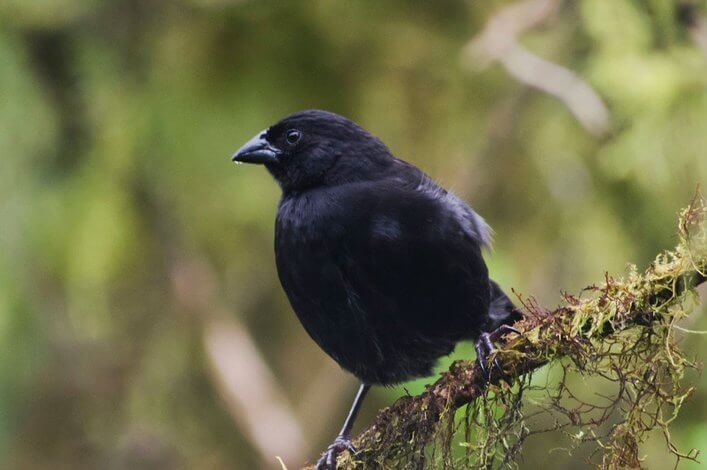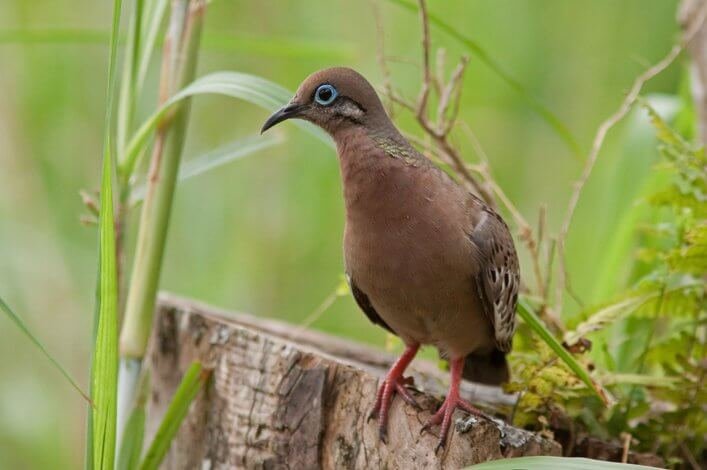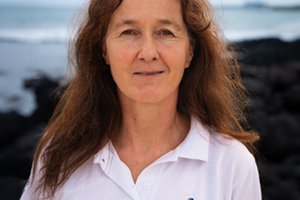
Galapagos landbirds welcome seven new species! Two former sub-species of the Vermilion Flycatcher are considered proper species, the Large Cactus Finch was split into the Genovesa Cactus Finch and the Española Ground Finch, and the Sharp-beaked Ground Finch was split into three species! However, those unique birds are in danger: five of these “new” species and nine others are classified as “threatened” by the International Union for Conservation of Nature (IUCN); populations are declining and several island populations have become extirpated.

The Landbird Conservation Project of the Charles Darwin Foundation (CDF) and the Galapagos National Park Directorate (GNPD) are currently collecting baseline data to clarify the conservation status of landbirds and develop management actions. This work is in collaboration with ornithologists from BirdLife Austria and University of Vienna and also counts on the support of ESPOL Polytechnic University, Universidad San Francisco de Quito (USFQ), other visiting scientists and many highly enthusiastic volunteers from Ecuador and other parts of the world.
For the first time we have baseline data for landbirds from San Cristóbal, Floreana, Santa Cruz, the highlands of Santiago, Marchena, Pinta, Santa Fe and volcanoes Sierra Negra and Alcedo on Isabela. Here are the highlights of the monitoring work so far and more detailed information can be found in a soon to be published article in Galapagos Report.

On Santa Cruz, the only island where some long-term landbird monitoring has been carried out, six of nine surveyed species had seriously declined: Vegetarian Finch, Green Warbler Finch, Yellow Warbler, Vermilion Flycatcher, Large Tree Finch and Woodpecker Finch – the latter two upgraded to “endangered: due to these findings. Sadly, we have to add two more species to these findings. The Small Tree Finch, seemingly stable between 1997 and 2008, is now decreasing in the highlands. In addition, the Galapagos Dove was found to be rare not only in Santa Cruz but in all inhabited islands and was hardly seen on Alcedo. A Galapaguena thesis student with the support of the Ministry of Agriculture, Cattle, Aquaculture and Fisheries (MAGAP), is currently investigating if the agricultural zone could be a refuge for this nowadays rare endemic bird species. Luckily, doves are still abundant on Santiago and other uninhabited islands where cats are absent; such as Pinta, Marchena and Santa Fe.

The Vermilion Flycatcher is as well doing poorly on other islands: it is missing from Floreana and San Cristóbal (last sighting in 2008), and is rare on Santiago and Alcedo. Though seems to be faring better on the flanks of Sierra Negra. We are currently testing techniques to control one of its threats, bloodsucking larvae of the introduced fly Philornis downsi. We are also investigating which factors best help this bright endemic bird to successfully reproduce.
On a positive side, the population of the endangered San Cristóbal mockingbird is several times larger than estimated in 2005. Similarly, population estimate of the Floreana island endemic, Medium Tree Finch, is considerably higher than previous estimates with an estimated 4000 pairs.

How can you help?
We would like to increase the participation of residents, tourists and naturalist guides in our monitoring. A program has already been initiated with some tour operators to get site-specific data for birds with important knowledge gaps such as the Galapagos Martin. Together with the company “Birds in the Hands”, we have developed a free Galapagos Bird App that provides pictures and information to help in bird identification. We are especially interested in sightings of doves, Vermilions and Smooth-billed ani, but any bird sightings can either reported through eBird or directly to us with an email to birds@fcdarwin.org.ec. The BirdsEye Galápagos app is free and can be downloaded from iOS or Android.
The project is supported by Friends of Galapagos Switzerland, Friends of Galapagos New Zealand, The Leona. M and Harry B. Helmsley Charitable Trust and Galapagos Conservancy.






